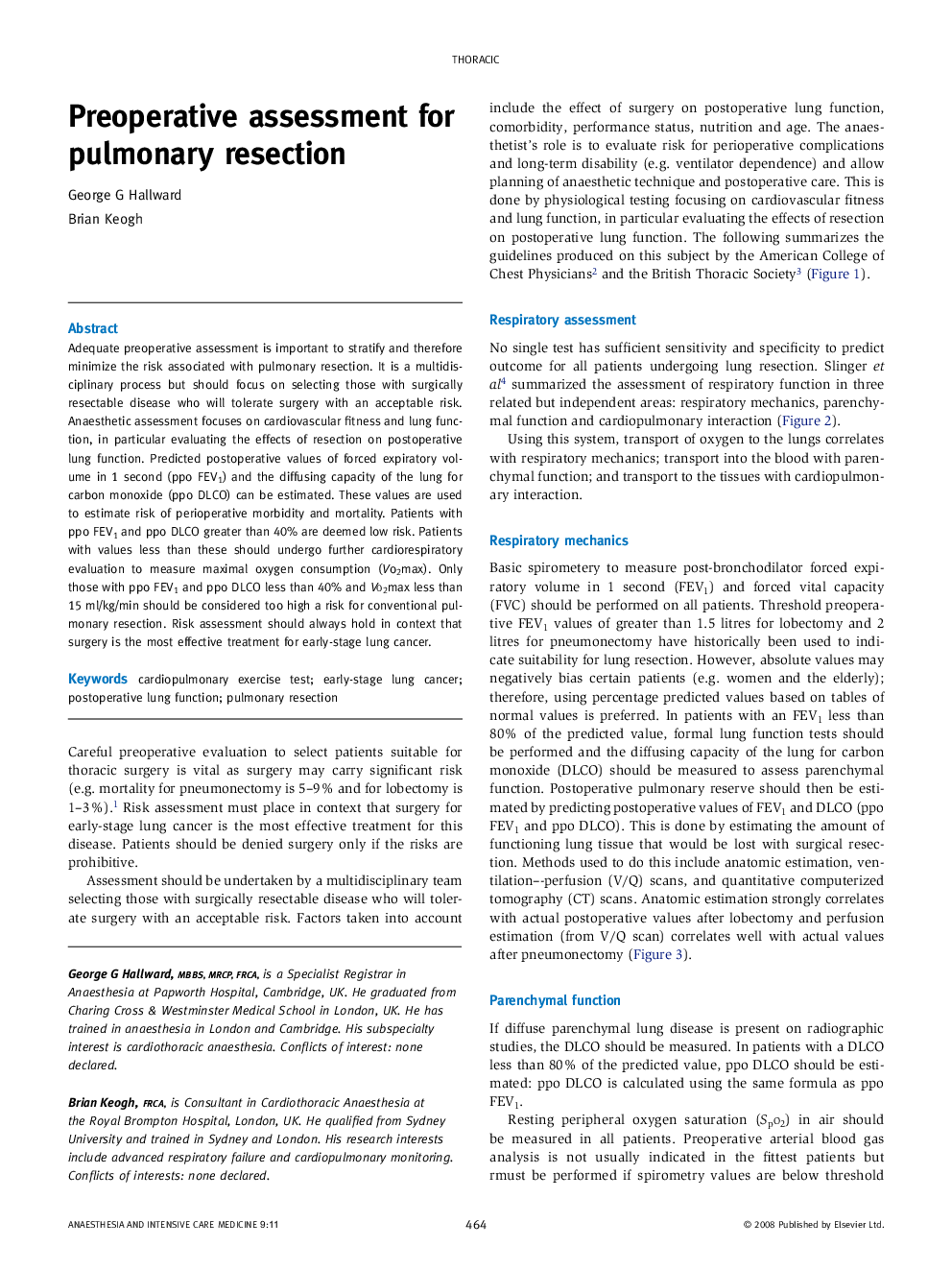| Article ID | Journal | Published Year | Pages | File Type |
|---|---|---|---|---|
| 2743681 | Anaesthesia & Intensive Care Medicine | 2008 | 4 Pages |
Adequate preoperative assessment is important to stratify and therefore minimize the risk associated with pulmonary resection. It is a multidisciplinary process but should focus on selecting those with surgically resectable disease who will tolerate surgery with an acceptable risk. Anaesthetic assessment focuses on cardiovascular fitness and lung function, in particular evaluating the effects of resection on postoperative lung function. Predicted postoperative values of forced expiratory volume in 1 second (ppo FEV1) and the diffusing capacity of the lung for carbon monoxide (ppo DLCO) can be estimated. These values are used to estimate risk of perioperative morbidity and mortality. Patients with ppo FEV1 and ppo DLCO greater than 40% are deemed low risk. Patients with values less than these should undergo further cardiorespiratory evaluation to measure maximal oxygen consumption (Vo2max). Only those with ppo FEV1 and ppo DLCO less than 40% and Vo2max less than 15 ml/kg/min should be considered too high a risk for conventional pulmonary resection. Risk assessment should always hold in context that surgery is the most effective treatment for early-stage lung cancer.
